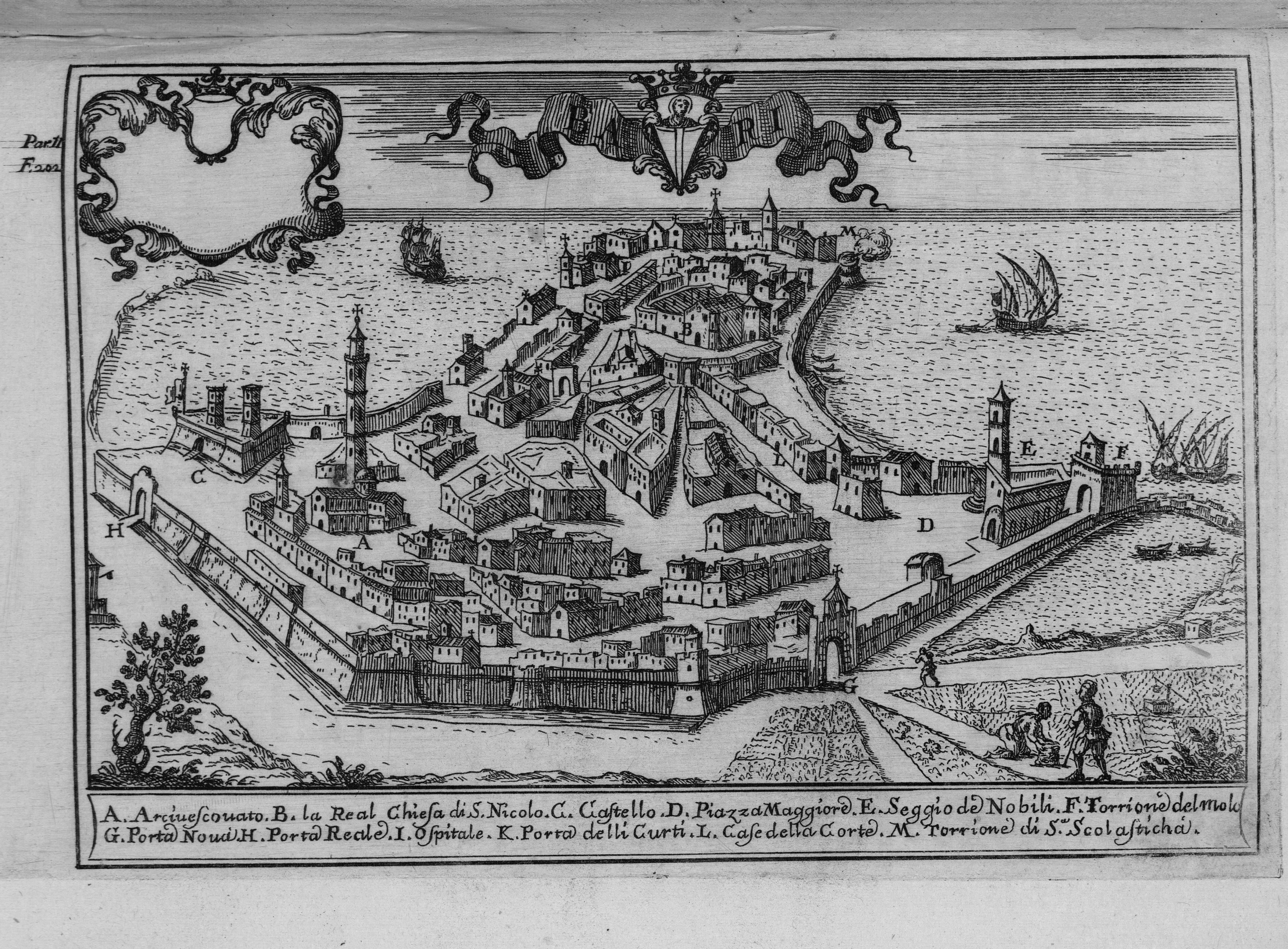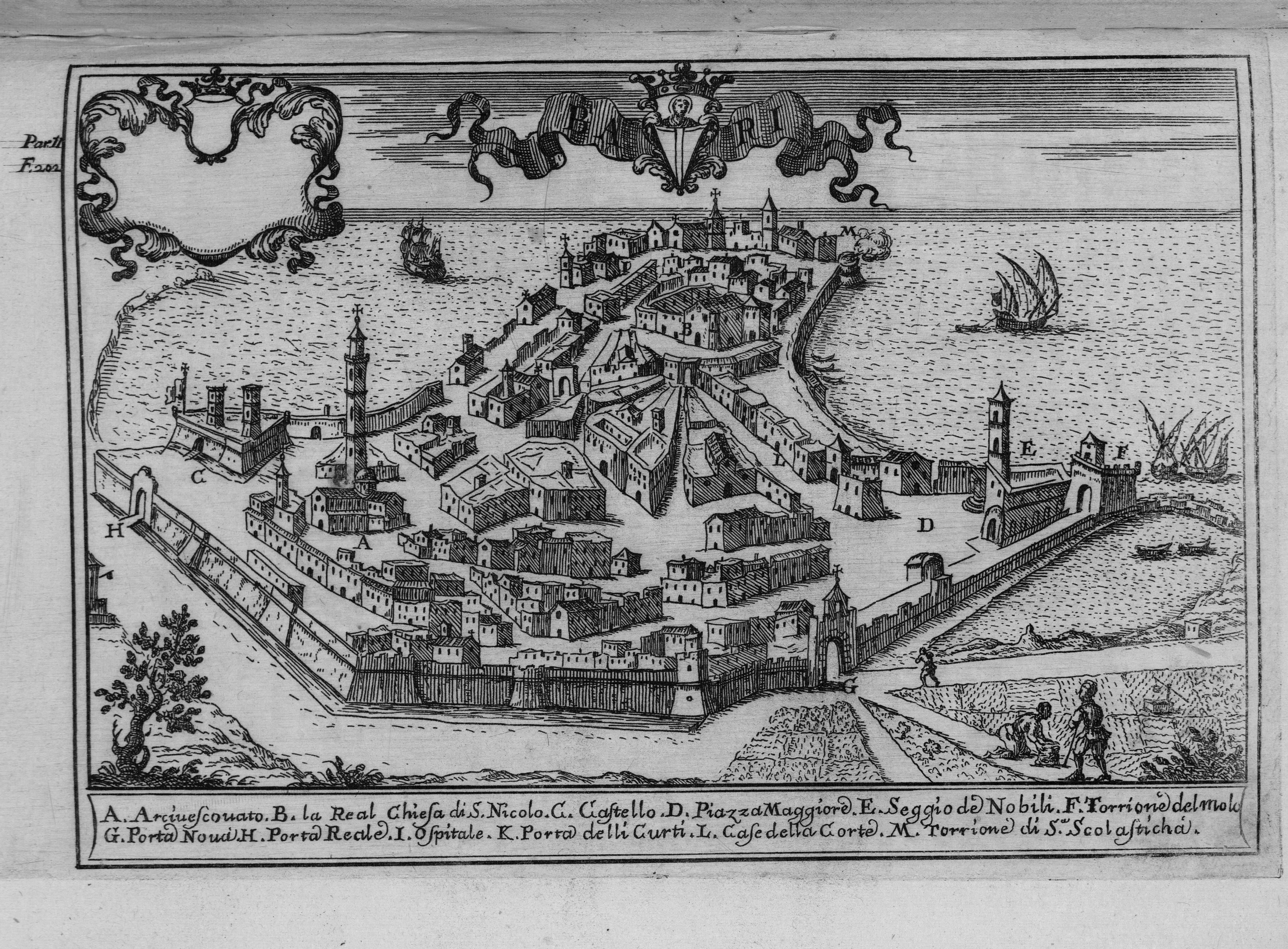
Bari
La città di Bari sembra formata da due distinti nuclei urbani, quasi giustapposti, a cui nella seconda metà del Novecento se ne è aggiunto anche un terzo. Tre città in una, tre culture diverse, tre momenti storici diversi. Partendo dal mare e dirigendosi verso la campagna, si trova per prima, distesa su una penisola naturale, la città vecchia, un tempo circondata da possenti mura.

Disegno di Bari per Il Regno di Napoli in prospettiva, di G. B. Pacichelli, 1703
(immagine tratta da Fondo Antiguo de la Biblioteca de la Universidad de Sevilla from Sevilla, España – “Bari”, CC BY 2.0, https://commons.wikimedia.org/w/index.php?curid=51281654)
Il centro storico, con la sua planimetria che evoca l’Oriente mediterraneo, appare un labirinto di vicoli e case, l’una a ridosso dell’altra, racchiuse entro i due poli architettonici e simbolici della città medievale: il Castello e la Basilica. Tra l’uno e l’altro polo si snoda un racconto urbano lungo quasi 3000 anni, fatto di strade, mosaici, chiese, edicole, confraternite, palazzi nobiliari, archi e corti che si aprono all’improvviso, dietro angoli che al viaggiatore potevano sembrare ciechi.
A ridosso di questa “Bari Vecchia” si giustappone la seconda città, quella conosciuta come il “centro murattiano”.
Non vi è un vero confine, una volta demolite le mura medievali, le due Bari si sono incontrate, senza però mai confondersi o mescolarsi. Un’unica larga strada – corso Vittorio Emanuele – separa queste due realtà urbane; attraversandola si lascia alle proprie spalle la quasba e il Medioevo e ci si ritrova a passeggiare nel borgo murattiano, caratterizzato da raffinate planimetrie ottocentesche. Questa seconda Bari, che si estende sino alla ferrovia, ha una semplice forma a parallelepipedo, entro il quale sono disegnate a scacchiera le strade. Gli assi viari perpendicolari presentano un orientamento Sud-Nord. Il mare a Bari è a Nord, per questo, percorrendo il centro si ha l’impressione che tutte le strade si allunghino sino al mare, sino alla linea d’orizzonte, dove il blu dell’Adriatico incontra il cielo. Diversamente le strade parallele hanno un orientamento Est-Ovest.
Dietro il borgo murattiano, la ferrovia, che corre parallela al mare, segna l’inizio della terza Bari, quella più schiettamente moderna e contemporanea, dove sono proliferati sia raffinati quartieri residenziali, sia le periferie popolari. Da qui la città si rivolge all’entroterra, quasi diradandosi verso la campagna pugliese.
Bibliografia di riferimento: F. Falagna, Bari città vetrina, in Viaggio in provincia, a cura di E. Angiuli, Biblos Edizioni, Cittadella di Padova 1991, p.406.
